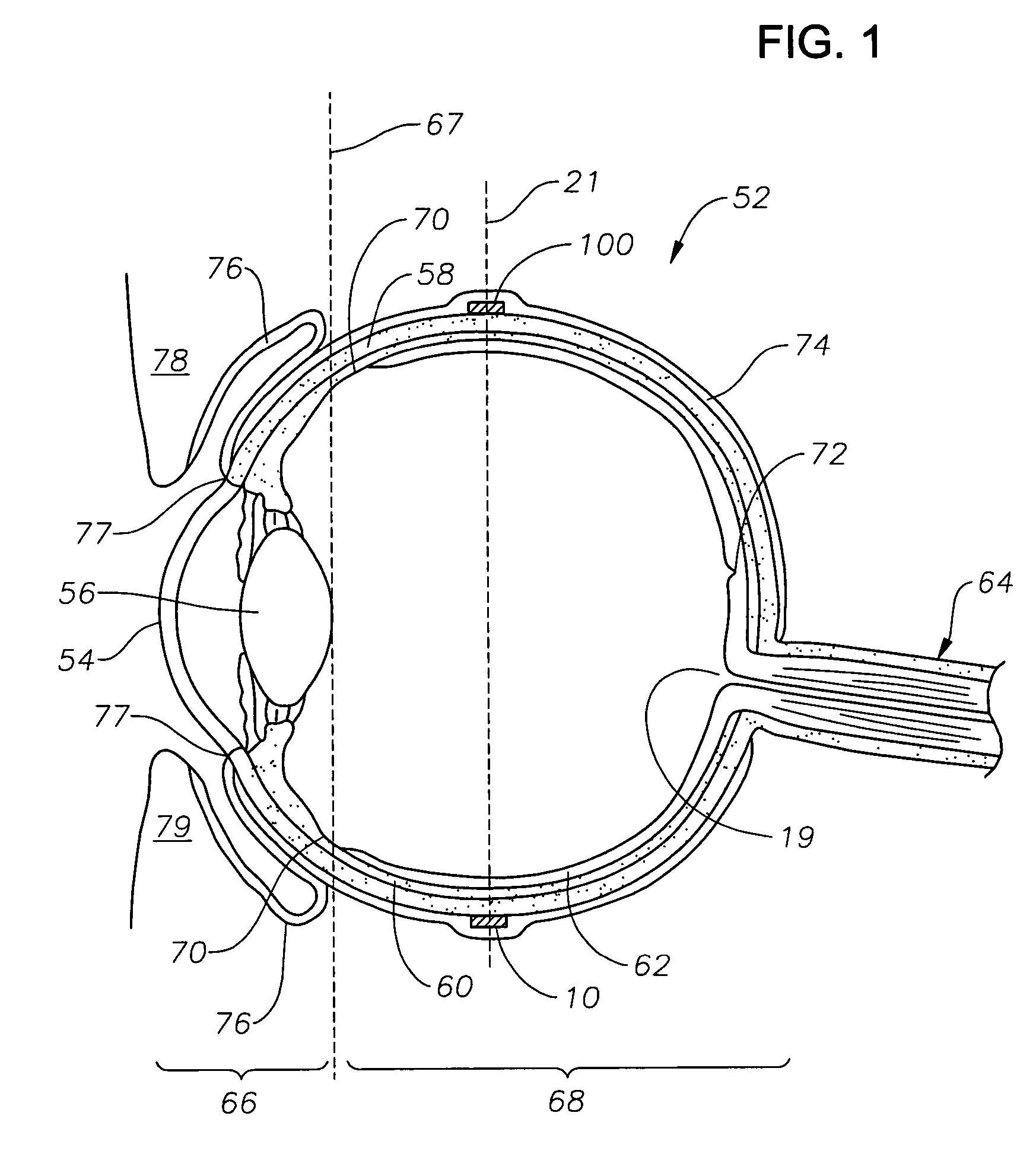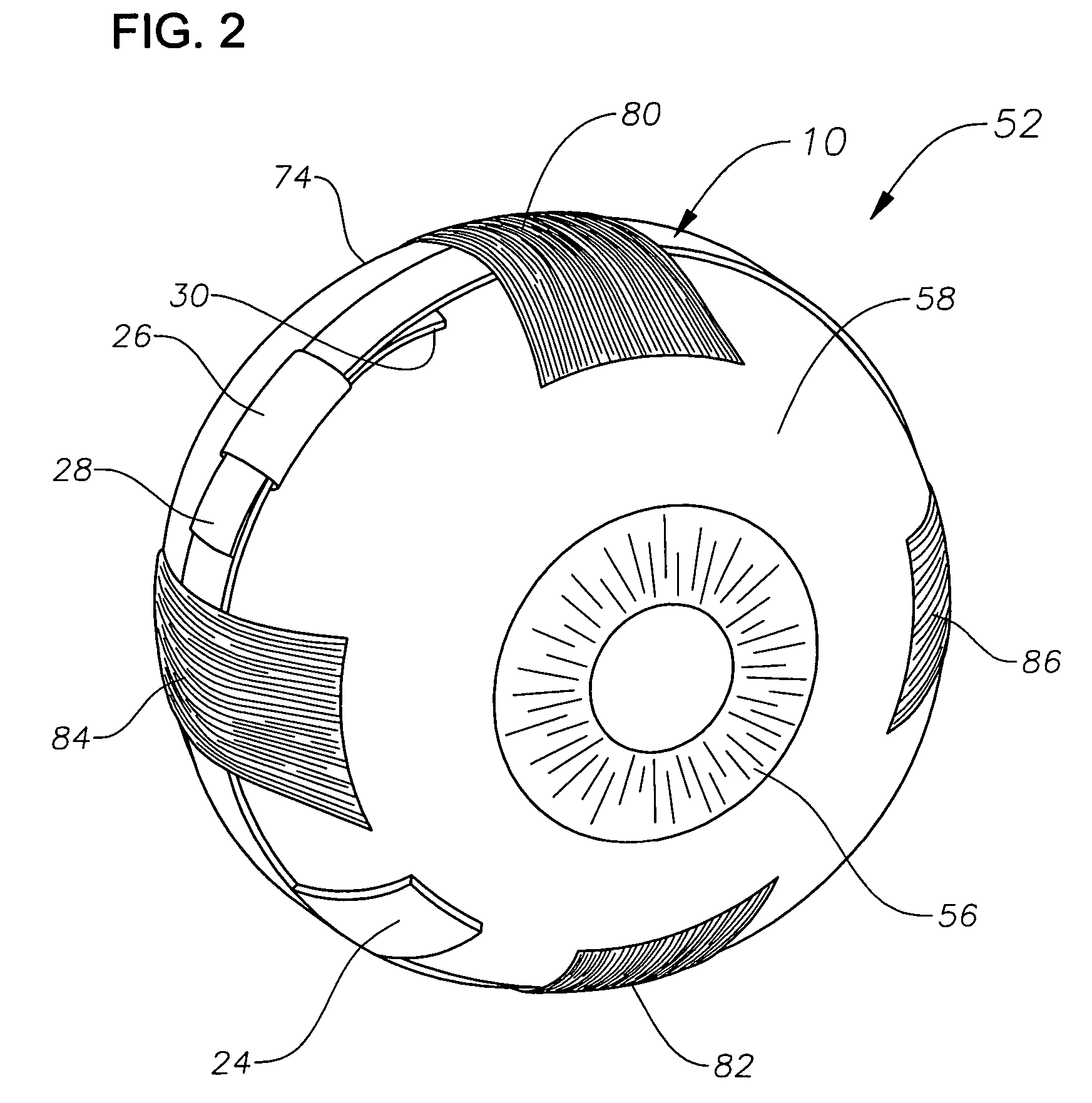Ophthalmic drug delivery device
a drug delivery and ophthalmology technology, applied in the field of biocompatible implants, can solve the problems of progressive damage to the retina, impracticality, and difficult or impossible reading, driving,
- Summary
- Abstract
- Description
- Claims
- Application Information
AI Technical Summary
Benefits of technology
Problems solved by technology
Method used
Image
Examples
Embodiment Construction
[0019]The preferred embodiments of the present invention and their advantages are best understood by referring to FIGS. 1–4 of the drawings, like numerals being used for like and corresponding parts of the various drawings.
[0020]FIGS. 1–4 schematically illustrate an ophthalmic drug delivery device 10 according to a preferred embodiment of the present invention. Device 10 may be used in any case where delivery of a pharmaceutically active agent to the eye is required. Device 10 is particularly useful for delivery of active agents to the posterior segment of the eye. A preferred use for device 10 is the delivery of pharmaceutically active agents to the retina for treating ARMD, choroidial neovascularization (CNV), retinopathies, retinitis, uveitis, macular edema, and glaucoma.
[0021]Referring to FIGS. 1–2, a human eye 52 is schematically illustrated. Eye 52 has a cornea 54, a lens 56, a sclera 58, a choroid 60, a retina 62, and an optic nerve 64. An anterior segment 66 of eye 52 genera...
PUM
 Login to View More
Login to View More Abstract
Description
Claims
Application Information
 Login to View More
Login to View More - R&D
- Intellectual Property
- Life Sciences
- Materials
- Tech Scout
- Unparalleled Data Quality
- Higher Quality Content
- 60% Fewer Hallucinations
Browse by: Latest US Patents, China's latest patents, Technical Efficacy Thesaurus, Application Domain, Technology Topic, Popular Technical Reports.
© 2025 PatSnap. All rights reserved.Legal|Privacy policy|Modern Slavery Act Transparency Statement|Sitemap|About US| Contact US: help@patsnap.com



